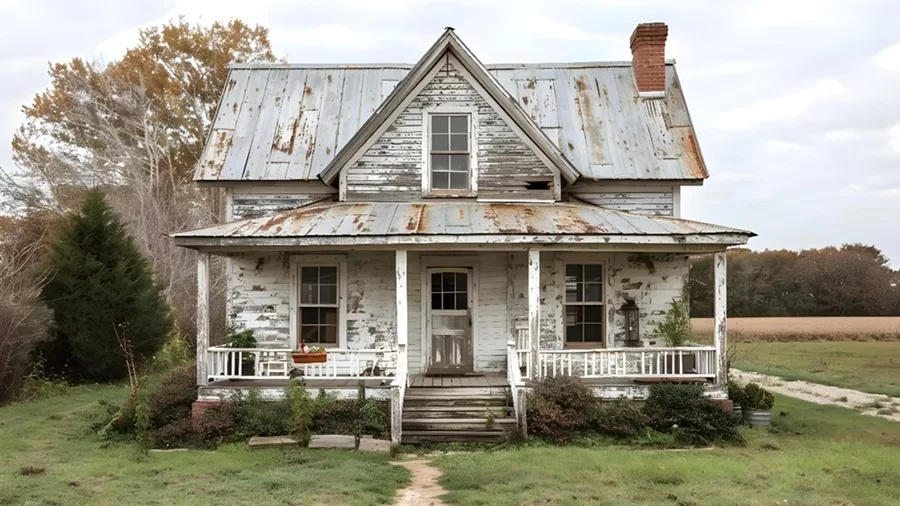Lifestyle
Navigating Plumbing Nightmares in Historic Homes

Owning a historic home is a bit like dating someone wildly attractive but slightly unstable—exquisite on the surface, but secretly ready to collapse at any moment. While you’re captivated by crown moldings, ornate fireplaces, and the romantic charm of squeaky hardwood floors, your pipes are quietly plotting their dramatic betrayal. Welcome to the world of plumbing nightmares, elegantly concealed behind plaster walls and vintage wallpaper.
Older homes weren’t exactly built with modern plumbing conveniences in mind. In fact, they’re sometimes held together more by nostalgia than nails. Cast iron, galvanized steel, and clay pipes lurk behind the scenes, silently deteriorating until the day they spectacularly fail—usually when you’re hosting your judgmental in-laws.
So, how do you navigate this particular horror show?
Know Your Enemy: Common Historic Plumbing Issues
Before you can battle these hidden villains, you need to know exactly who you’re dealing with:
- Cast Iron and Galvanized Pipes: These might look sturdy, but inside, they’re often clogged, rusted, or slowly collapsing, causing low water pressure and discolored water.
- Clay Sewer Lines: Brittle, prone to cracks, and beloved by invading tree roots.
- Lead Pipes: Yes, some historic homes still hide these health hazards within their walls.
Inspect First, Panic Later
Knowledge is power—especially when it comes to plumbing. Schedule a thorough plumbing inspection with someone who won’t sugarcoat the truth. You need brutal honesty about corrosion, leaks, outdated pipe layouts, and just how close you are to a plumbing apocalypse. This step might save you from unpleasant surprises later.
Preserve Charm Without Inviting Disaster
We adore antique claw-foot tubs and authentic brass faucets as much as anyone, but historically accurate plumbing often equals historically accurate flooding. Maintain your home’s aesthetic by discreetly modernizing. Copper or PEX pipes, concealed cleverly behind vintage fixtures, let you enjoy charm without constant anxiety.
Preventative Maintenance: Your New Religion
Historic homes demand vigilance bordering on obsession. Here’s your new mantra: Inspect often, act swiftly. Regularly clear slow drains before they turn vindictive. Replace worn fittings immediately. Never ignore suspicious dripping sounds. Remember, ignoring small plumbing issues can rapidly escalate into cinematic-level disasters.
Respect Historical Limits (or Else)
Those spacious, luxurious bathrooms you crave weren’t in the original blueprints. Historic plumbing wasn’t designed for today’s water demands. Limit excessive water use, skip installing that oversized rainforest showerhead, and reconsider the trendy steam room unless you’re genuinely eager to experience an indoor rainforest firsthand.
DIY Is Tempting—But Sometimes Terrifying
DIY enthusiasts: your courage is commendable, but historic plumbing might just be the dragon you can’t slay alone. One wrong move with old pipes and your charming Victorian bathroom turns into a very wet tragedy. Know your limits and call for professional reinforcements—like the experts at Apple Plumbing Heating & Air—when necessary. It’s cheaper (and less humiliating) in the long run.
Insurance and Permits: A Necessary Evil
Sure, paperwork is annoying—but floods are worse. If you’re updating plumbing significantly, don’t overlook permits or insurance policies tailored for historic properties. These steps might sound dull, but they’re significantly less dreadful than dealing with bureaucratic nightmares after a plumbing disaster strikes.
Emergency Plans: Expect the Unexpected
Historic home plumbing will occasionally stage dramatic breakdowns, typically on holidays or at 2 AM. Always keep an emergency plumbing service on speed dial, and have contingency plans ready. Think buckets, towels, wet vacuums, and a supportive friend willing to host you overnight—just in case.
Embrace Your Home’s Quirks—Even the Wet Ones
Navigating plumbing nightmares in historic homes isn’t for the faint-hearted. But with preventive maintenance, thoughtful upgrades, emergency preparedness, and professional guidance, you can appreciate your home’s unique personality without drowning in drama. Owning history means embracing every quirk—even the damp, inconvenient, and occasionally infuriating ones.

























































